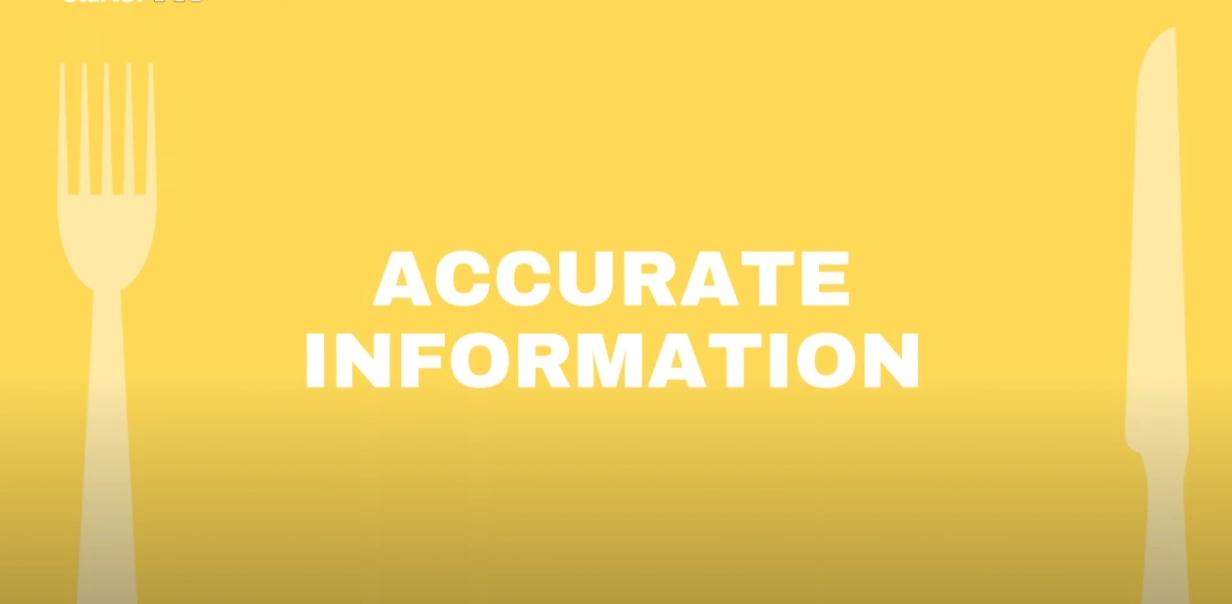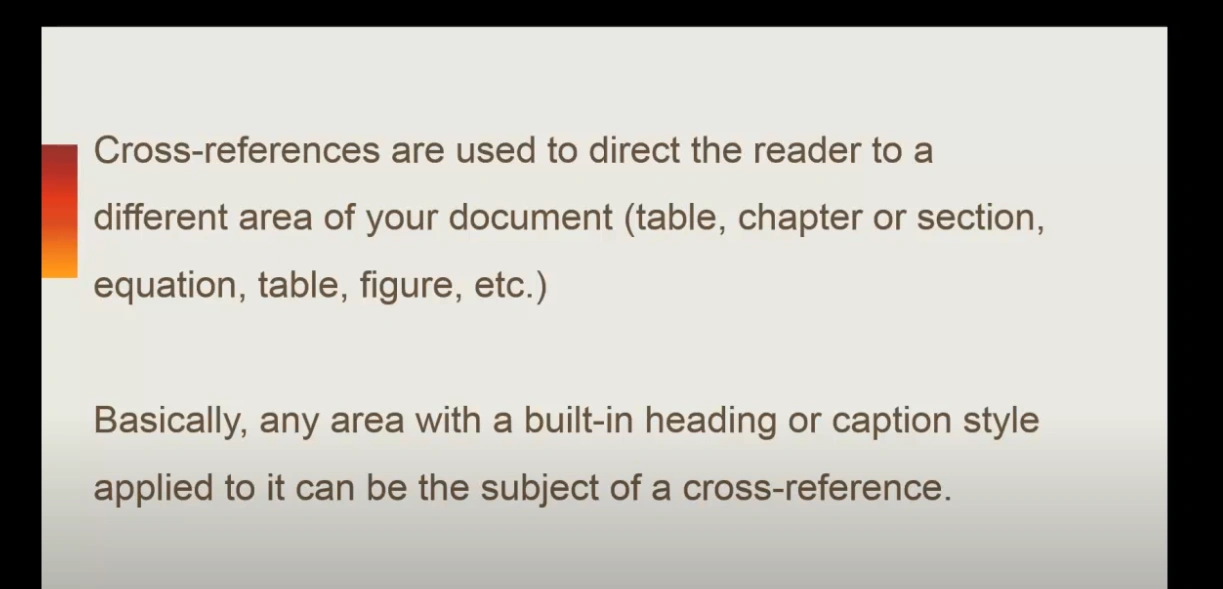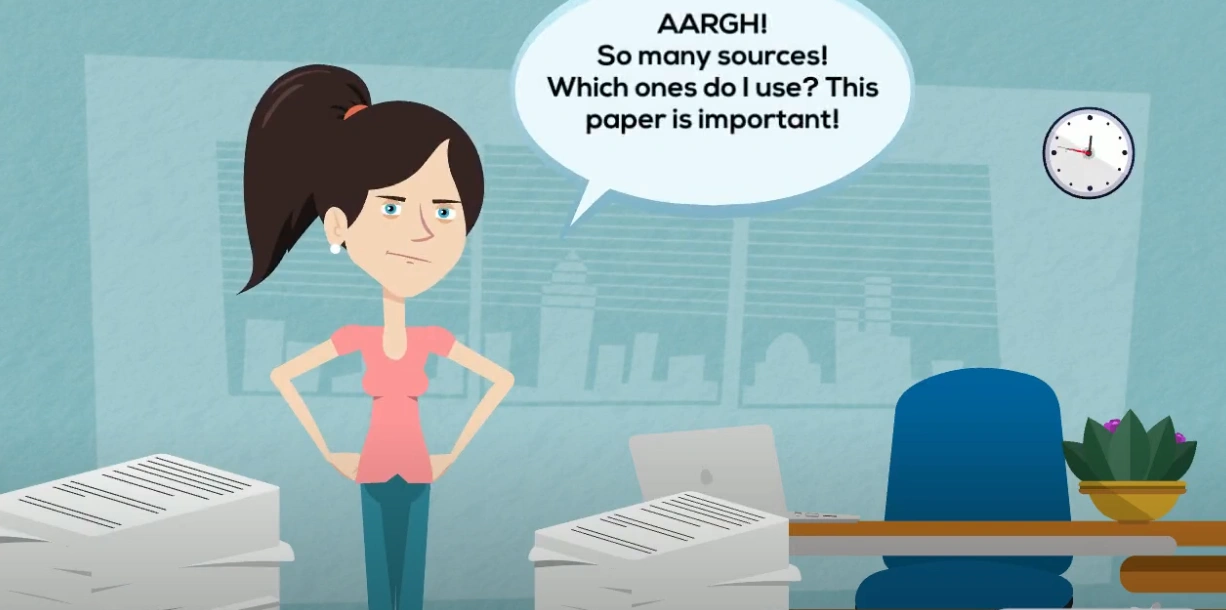Ensuring information is accurate is essential. It’s crucial for credibility and trust.
In today’s digital age, misinformation spreads easily. Anyone can publish content online, but not all of it is true. Accuracy in information is vital, especially for research, education, and decision-making. It helps avoid misunderstandings and errors. You might wonder how to ensure the information you find is correct.
In this blog, we’ll explore practical steps to verify the accuracy of information. From evaluating sources to checking facts, you’ll learn how to confidently navigate the sea of data available. Let’s dive into the essential tips and techniques to ensure the information you rely on is accurate and reliable.
Importance Of Accurate Information
Ensuring information is accurate is crucial for making informed decisions. Verify facts through credible sources and cross-check data. Consistent accuracy builds trust and credibility.
Accurate information is crucial. It helps individuals make informed choices. Whether in business, education, or daily life, the right data is essential. In a world full of information, accuracy stands out. It builds trust and credibility. Incorrect information can lead to wrong decisions. This can be costly. Accurate information also ensures transparency. It helps maintain integrity.

For tips on creating content that is both reliable and optimized for search engines, check out this resource: How to Generate SEO-Friendly Articles with AI.
Impact On Decision Making
The quality of decisions depends on the information available. Accurate data leads to better outcomes. People rely on facts to decide. This includes businesses planning strategies. Students choosing career paths. Even consumers making purchases. Accurate information guides them. It reduces uncertainty. It boosts confidence in their choices.
Risks Of Misinformation
Misinformation poses significant risks. It can lead to poor decisions. Businesses may suffer financial losses. Individuals might face personal setbacks. Incorrect medical advice can harm health. Misinformation spreads quickly. It can damage reputations. It erodes trust. Addressing misinformation is crucial. Ensuring information accuracy is the key. “`

Credit: www.chegg.com
Fact-checking Sources
Ensuring the accuracy of information is crucial in the digital age. Fact-checking sources is a vital step in this process. Below, we explore how to evaluate the credibility of sources and the importance of cross-referencing information.
Evaluating Credibility
When fact-checking, start by evaluating the credibility of your sources. Ask yourself:
- Who is the author?
- What are their qualifications?
- Is the source reputable?
Credible sources often include:
- Academic journals
- Government websites
- Established news outlets
Be wary of sources with:
- No author listed
- Biased language
- Unverified claims
Cross-referencing information helps confirm its accuracy. Follow these steps:
- Find multiple sources reporting the same information.
- Compare details from each source.
- Look for consistency in the facts presented.
Using a table can help in cross-referencing:
| Source | Fact 1 | Fact 2 | Fact 3 |
|---|---|---|---|
| Source A | Verified | Verified | Unverified |
| Source B | Verified | Verified | Verified |
| Source C | Verified | Unverified | Verified |
In this example, Fact 1 is consistent across all sources. Fact 2 and Fact 3 need further verification.
By evaluating credibility and cross-referencing, you can ensure your information is accurate.
Ensuring the accuracy of information is crucial. Using reputable sources is the first step. Reliable sources enhance trust and provide valid data. This section will guide you on how to identify these sources.
Trusted Websites
Trusted websites are vital for accurate information. They usually end in .gov, .edu, or .org. Government sites provide official data and statistics. Educational institutions offer research-based articles. Non-profit organizations share verified and reliable information. Always check the site’s credibility before trusting the data.
Academic Journals
Academic journals are excellent for accurate information. They contain peer-reviewed articles. Experts review these articles before publication. This process ensures the data’s reliability. Use databases like Google Scholar to find these journals. They offer in-depth research and verified findings. Academic journals are essential for credible information.
Verifying Data And Statistics
Ensuring the accuracy of information is crucial in today’s data-driven world. Verifying data and statistics is an essential part of this process. Accurate data helps in making informed decisions. It builds trust among readers. Here’s how to verify data and statistics effectively.
Analyzing Data Sources
Start by checking the credibility of the data source. Reliable sources often have a history of providing accurate information. Check if the source is reputable and well-known. Verify that the data is up-to-date. Outdated data can mislead your conclusions. Cross-reference data with other trusted sources. Consistency across multiple sources indicates reliability.
Understanding Methodologies
Understanding the methodology used to collect data is vital. Check if the data collection process is transparent. Reliable data should have clear methodologies. Look for any biases in the data collection process. Biases can skew the data results. Ensure that the sample size is adequate. Small sample sizes can lead to inaccurate results. The methodology should be appropriate for the type of data being collected.
Consulting experts is a key step in ensuring information accuracy. Experts possess in-depth knowledge and valuable insights that can help validate and enhance the reliability of data. By leveraging their expertise, you can avoid misinformation and make informed decisions.
Identifying Qualified Experts
Finding the right experts is crucial. Look for individuals with relevant qualifications and extensive experience in the subject matter. Consider the following:
- Academic Background: Check their degrees and certifications.
- Professional Experience: Review their work history and achievements.
- Publications: Assess their published articles or books.
- Reputation: Look for peer reviews and industry recognition.
These factors help ensure the expert’s credibility and reliability.
Utilizing Expert Opinions
Once you identify the right experts, effectively use their opinions:
- Interviews: Conduct interviews to gather detailed insights.
- Surveys: Use surveys to collect expert opinions on specific topics.
- Panels: Form expert panels for comprehensive discussions and consensus.
- Publications: Reference expert-authored articles or books.
These methods provide diverse perspectives and deepen your understanding.
Remember to cross-check information from multiple experts to ensure accuracy and avoid biases. This approach strengthens the credibility of your data and enhances the quality of your content.

Credit: www.instagram.com
Utilizing Technology
Ensuring information accuracy is crucial in today’s digital age. Technology can aid in verifying facts and ensuring reliability. Advanced tools and methods make this task easier and more efficient. Here are some ways technology can help.
Fact-checking Tools
Fact-checking tools are essential for verifying information. They help identify false claims and misinformation. Popular tools include:
- Snopes: A well-known fact-checking website.
- FactCheck.org: A project that reviews the accuracy of statements.
- PolitiFact: A website that rates the accuracy of claims by public figures.
These tools provide reliable sources for verification. They are user-friendly and accessible to anyone.
Ai And Machine Learning
Artificial intelligence (AI) and machine learning (ML) are transforming information verification. These technologies analyze vast amounts of data quickly. They detect patterns and inconsistencies. Examples of AI and ML applications include:
- Natural Language Processing (NLP): Helps in understanding and analyzing human language.
- Automated Fact-Checking: AI algorithms cross-check information against trusted databases.
- Content Moderation: ML models filter out false or harmful content on social platforms.
These technologies enhance the speed and accuracy of information verification. They make it easier to ensure content is credible and trustworthy.
Maintaining Skepticism
Maintaining skepticism is vital in today’s world where information is abundant. It’s essential to question the validity of what we read and hear. This approach helps in distinguishing facts from fiction. By doing so, we can make well-informed decisions based on accurate data.
Questioning Unusual Claims
Always question claims that seem too good to be true. Extraordinary assertions need strong evidence. Seek out reputable sources to confirm these claims. Look for data from experts or trusted organizations. Check if other reliable sources report the same information. This step ensures you’re not misled by false or exaggerated statements.
Avoiding Confirmation Bias
Confirmation bias happens when we only accept information that fits our beliefs. This can distort our understanding of reality. Actively seek out opposing views. This helps in forming a balanced perspective. Evaluate all evidence with an open mind. This practice prevents us from falling into the trap of only seeing what we want to see. Balance is key.

Credit: carolinademography.cpc.unc.edu
Updating Information Regularly
Ensuring that your information is accurate means updating it regularly. This practice keeps your content relevant and trustworthy. It also helps to maintain your audience’s confidence. Regular updates show that you are committed to providing the most current information.
Staying Current
Staying current involves keeping up with the latest changes in your field. This means reading recent articles, studies, and news. New information can emerge at any time. So, it’s important to stay informed.
Set aside time each week to check for updates. This can be through professional journals, trusted news sites, or industry blogs. Use reliable sources to ensure your information remains accurate. This habit will help you catch any changes or new findings promptly.
Revisiting Sources
Revisiting sources is a key part of updating information. Check your original sources to see if they have been updated. Sometimes, new editions of studies or articles are published. These can contain more accurate or recent data.
Also, look at your own content. Ensure that all links and references are still valid. Broken links or outdated references can hurt your credibility. Regularly revisiting your sources helps maintain the accuracy of your information.
In conclusion, updating information regularly involves staying current and revisiting sources. This ensures that your content remains accurate and trustworthy. It also shows your commitment to providing the best information to your audience.
Frequently Asked Questions
How To Verify The Accuracy Of Information?
To verify accuracy, cross-check information with reliable sources. Use fact-checking websites, academic journals, and reputable news outlets.
What Tools Help Ensure Information Accuracy?
Tools like FactCheck. org, Snopes, and Google Fact Check can help verify the accuracy of information effectively.
Why Is Information Accuracy Important?
Accurate information is crucial for making informed decisions, building trust, and avoiding misinformation or false conclusions.
How Can I Identify Reliable Sources?
Reliable sources include academic journals, government websites, and established news organizations with a history of accuracy.
Conclusion
Ensuring information accuracy is crucial. Always verify sources. Cross-check facts. Use reliable references. Avoid spreading misinformation. Stay vigilant. Keep learning. Question everything. Share only verified data. Accuracy builds trust. Trust fosters credibility. Credibility matters.
For more insights on creating reliable and optimized content, explore this guide: How to Generate SEO-Friendly Articles with AI




